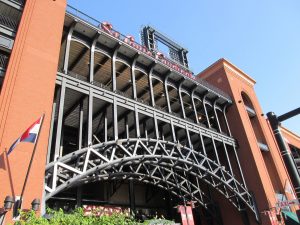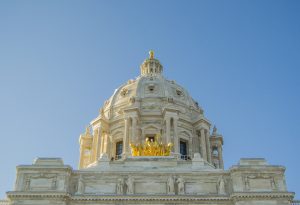
Author: Luis Blanquez
We’ve discussed the state action doctrine many times in the past. The courts have interpreted the federal antitrust laws as providing a limited exemption from the antitrust laws for certain state and local government conduct. This is known as state-action immunity.
In this article, we will discuss how the FTC and DOJ have approached this important antitrust exemption over time. And we are going to do it in several steps. First, we will examine the early stages, with the creation of the State Action Task Force. Second, we will consider the reflections from former FTC Commissioner Maureen K. Ohlhausen on the Supreme Court’s 2015 North Carolina Dental Decision; and the FTC Staff Guidance on Active Supervision of State Regulatory Boards Controlled by Market Participants. Last, we will spend some time on what is an amicus brief, and will analyze some of the most recent briefs on state action immunity filed by the FTC and DOJ.
You might also enjoy our article on why you should consider filing an amicus brief in a federal appellate case.
-
THE FIRST STEPS: THE MODERN STATE ACTION PROGRAM
In September 2003, the State Action Task Force of the FTC published a report summarizing the state action doctrine, explaining how an overbroad interpretation of the state action doctrine could potentially impede national competition goals. The Task Force stressed that (i) some courts had eroded the clear articulation and active supervision standards, (ii) courts had largely ignored the problems of interstate spillover effects, (iii) and that there was an increasing role for municipalities in the marketplace.
To address these problems, the FTC suggested in its report that the Commission implement the following recommendations through litigation, amicus briefs and competition advocacy: (1) re-affirm a clear articulation standard tailored to its original purposes and goals, (2) clarify and strengthen the standards for active supervision, (3) clarify and rationalize the criteria for identifying the quasi-governmental entities that should be subject to active supervision, (4) encourage judicial recognition of the problems associated with overwhelming interstate spillovers, and consider such spillovers as a factor in case and amicus/advocacy selection, and (5) undertake a comprehensive effort to address emerging state action issues through the filing of amicus briefs in appellate litigation.
Finally, the report outlined previous Commission litigation and competition advocacy involving state action.
-
PHOEBE PUTNEY AND NORTH CAROLINA DENTAL
FTC v. Phoebe Putney Health Sys. Inc., 133 S. Ct. 1003 (2013).
In Phoebe Putney, two Georgia laws gave municipally hospital authorities certain powers, including “the power ‘[t]o acquire by purchase, lease, or otherwise and to operate projects.” Under these laws, the Hospital Authority of Albany tried to acquire another hospital. Such laws provided hospital authorities the prerogative to purchase hospitals and other health facilities, a grant of authority that could foreseeably produce anticompetitive results.
The Supreme Court reaffirmed foreseeability as the touchstone of the clear-articulation test, id. at 226–27, 113 S. Ct. at 1011, but placed narrower bounds to its meaning. In particular, the Supreme Court held that “a state policy to displace federal antitrust law [is] sufficiently expressed where the displacement of competition [is] the inherent, logical, or ordinary result of the exercise of authority delegated by the state legislature.” Id. at 229, 113 S. Ct. at 1012–13. “[T]he ultimate requirement [is] that the State must have affirmatively contemplated the displacement of competition such that the challenged anticompetitive effects can be attributed to the ‘state itself.’” Id. at 229, 113 S. Ct. at 1012 (citation omitted)
Jarod Bona filed an amicus brief in this case, which you can read here. You can also read a statement from the FTC on this case here.
North Carolina State Board of Dental Examiners v. FTC Decision
We have written extensively about this case in the blog. Please see here and here.
In a nutshell, the FTC took notice, brought an administrative complaint against the board, and ultimately found the board had violated federal antitrust law. Importantly, the FTC also held that the board was not entitled to state-action immunity because its actions interpreting the dental practice act were not reviewed by a disinterested state official to ensure that they accorded with state policy. The Fourth Circuit agreed with the FTC, and the Supreme Court granted certiorari.
The case centered on whether a state professional-licensing board dominated by private market participants had to show both elements of Midcal’s two-prong test: (1) a clear articulation of authority to engage in anticompetitive conduct, and (2) active supervision by a disinterested state official to ensure the policy comports with state policy. Previous Supreme Court decisions exempted certain non-sovereign state actors, primarily municipalities, from the active supervision requirement. The board argued it should be exempt as well.
The Supreme Court rejected the board’s arguments and held that “a state board on which a controlling number of decisionmakers are active market participants in the occupation the board regulates must satisfy Midcal’s active supervision requirement to invoke state-action antitrust immunity.”
Bona Law also filed an amicus brief in this case, which you can find here.
In the wake of this Supreme Court decision, state officials requested advice from the FTC about antitrust compliance for state boards responsible for regulating occupations. Shortly after, the FTC published its Staff Guidance on Active Supervision of State Regulatory Boards Controlled by Market Participants. The Commission provided guidance on two questions. First, when does a state regulatory board require active supervision in order to invoke the state action defense? Second, what factors are relevant to determining whether the active supervision requirement is satisfied. If you want to read our summary of the guidance please see here.
-
THE TOOL OF THE FTC AND DOJ: AMICUS CURIAE BRIEFS
An amicus curiae brief is a persuasive legal document filed by a person or entity in a case, usually while the case is on appeal, in which it is not a party but has an interest in the outcome. Amicus curiae literally means “friend of the court.” Amicus parties try to “help” the court reach its decision by offering facts, analysis, or perspective that the parties to the case have not. There is considerable evidence that amicus briefs have influence, and appellate courts often cite to them in issuing their decisions.
As far as the state action immunity is concerned, the DOJ and FTC have published several amicus briefs. Here are some particularly relevant ones:
Continue reading →
 The Antitrust Attorney Blog
The Antitrust Attorney Blog











